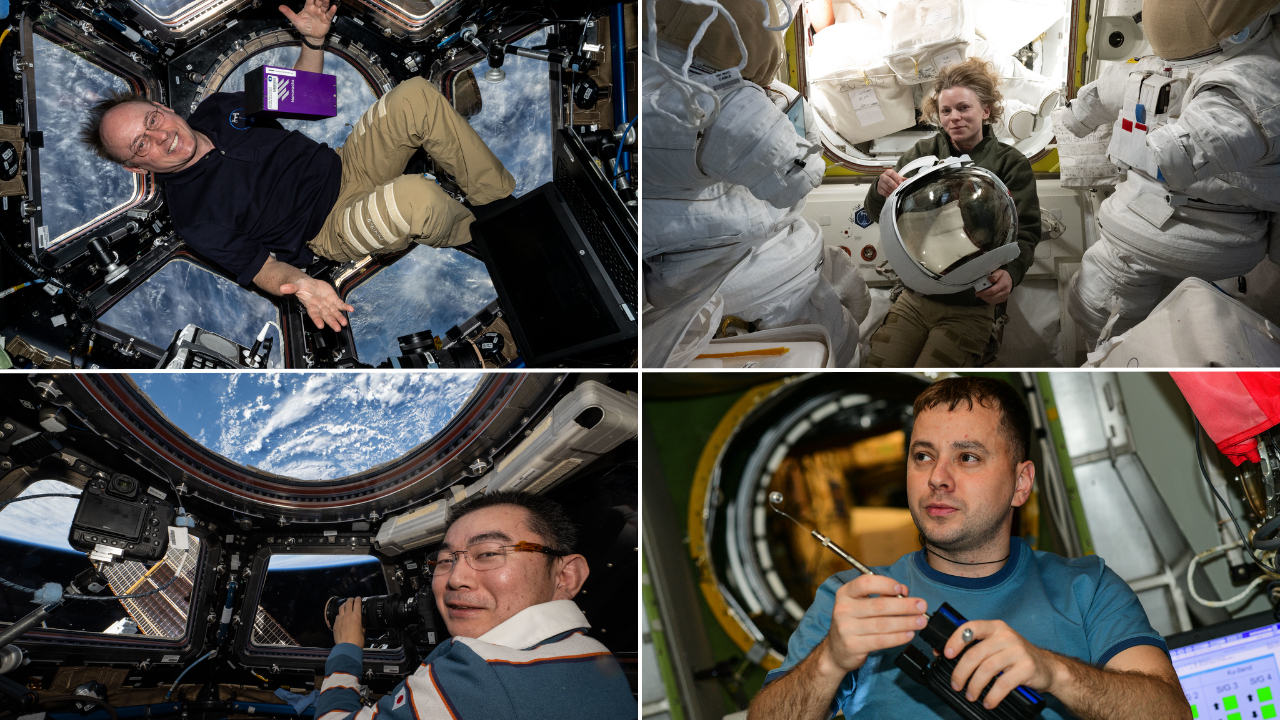The US Space Force's secretive X-37B space plane: 10 surprising facts
Six X-37B missions have launched to date.
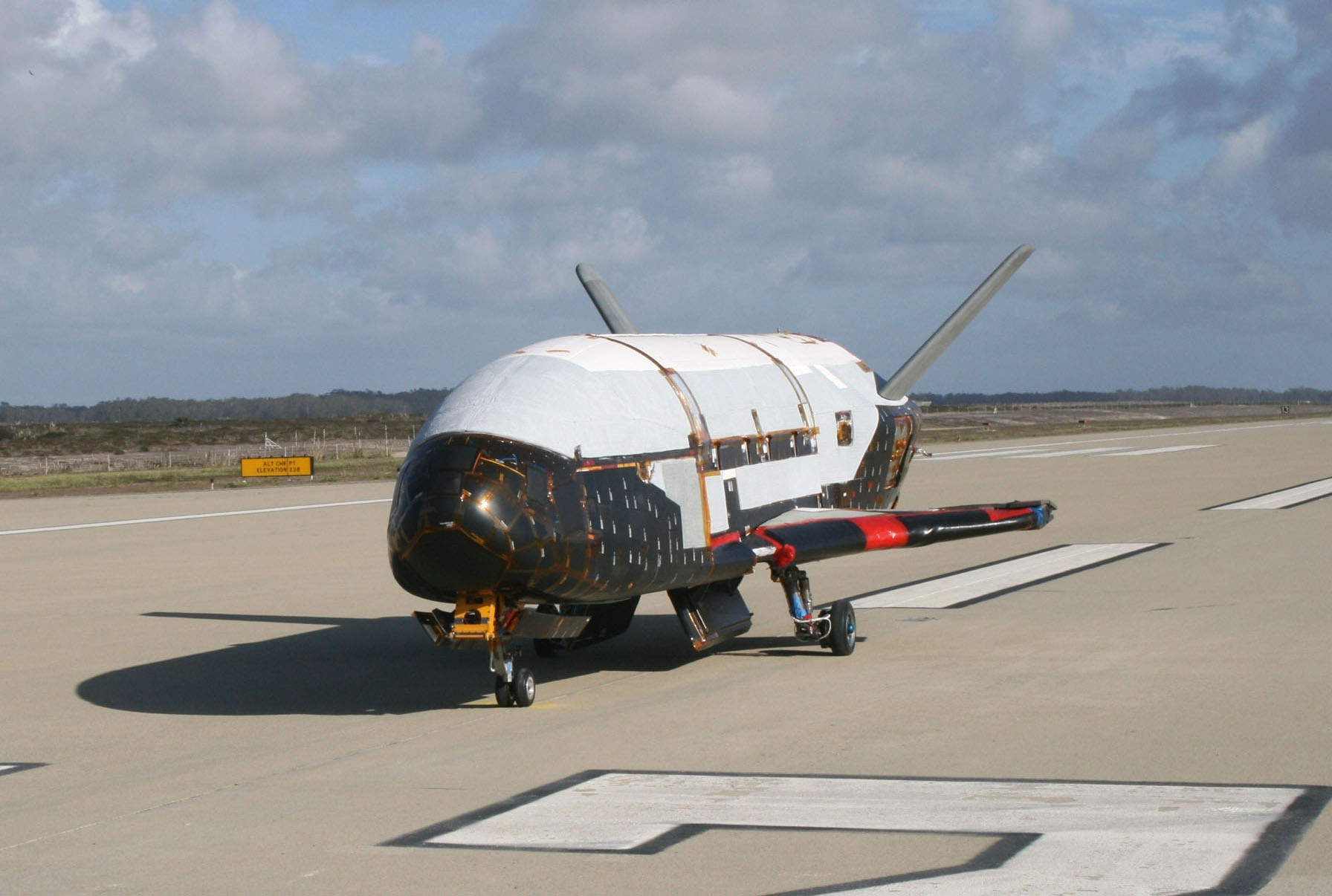
The U.S. Space Force has a mini-fleet of two robotic X-37B space planes, which have been flying secret missions since 2010.
The most recent mission, called OTV-6, launched in May 2020 and is ongoing. As that name suggests, it's the sixth flight for the robotic X-37B, which is also known as the Orbital Test Vehicle (OTV). The other five OTV missions launched in April 2010, March 2011, December 2012, May 2015 and September 2017.
We've assembled 10 surprising facts about the military space plane for you. Just click the arrows to launch to the next page and enjoy.
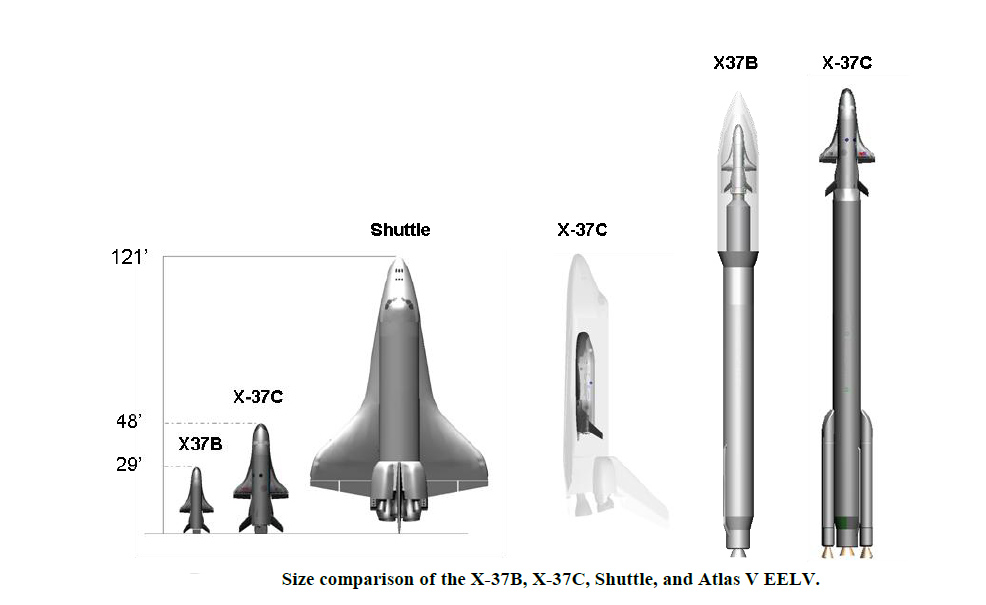
1) It's tiny
The X-37B looks a lot like NASA's iconic space shuttle, but the two types of vehicles don't resemble each other in size. The X-37B is just 29 feet (8.8 meters) long, with a wingspan of 15 feet (4.6 m). The now-retired space shuttle orbiters, by contrast, were 122 feet (37 m) long and measured more than 78 feet (24 m) from wingtip to wingtip.Two X-37Bs could fit inside the shuttle's cavernous payload bay.
Indeed, the X-37B's designers originally envisioned the shuttle carrying the smaller space plane to orbit but ultimately decided that launching the X-37B atop a rocket would be more economical. The X-37B has ridden to orbit atop two different boosters to date — United Launch Alliance's Atlas V and SpaceX's Falcon 9. Like the space shuttle, the X-37B lands on a runway, plane-style, but does everything autonomously (in contrast to the piloted shuttle, which usually carried a crew of seven astronauts).
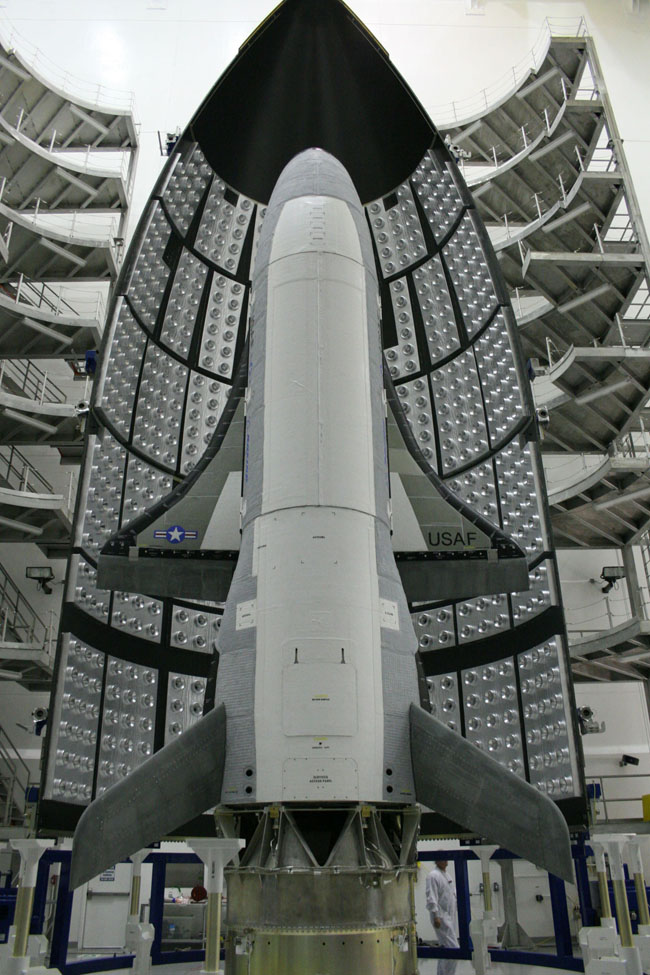
2) Its missions are classified
Although the Space Force has disclosed some of the payloads that have flown aboard the X-37B, most of the space plane's gear is classified, as are the details of its orbital activities. This secrecy has led to some speculation that the vehicle is some sort of space weapon, perhaps one designed to take out or capture satellites. However, military officials have always denied this notion, insisting that the X-37B is just testing out technologies for future spacecraft and carrying various experiments up to space and back. Some of the technologies being tested are likely sensors and other equipment for future spy satellites, outside experts have said.
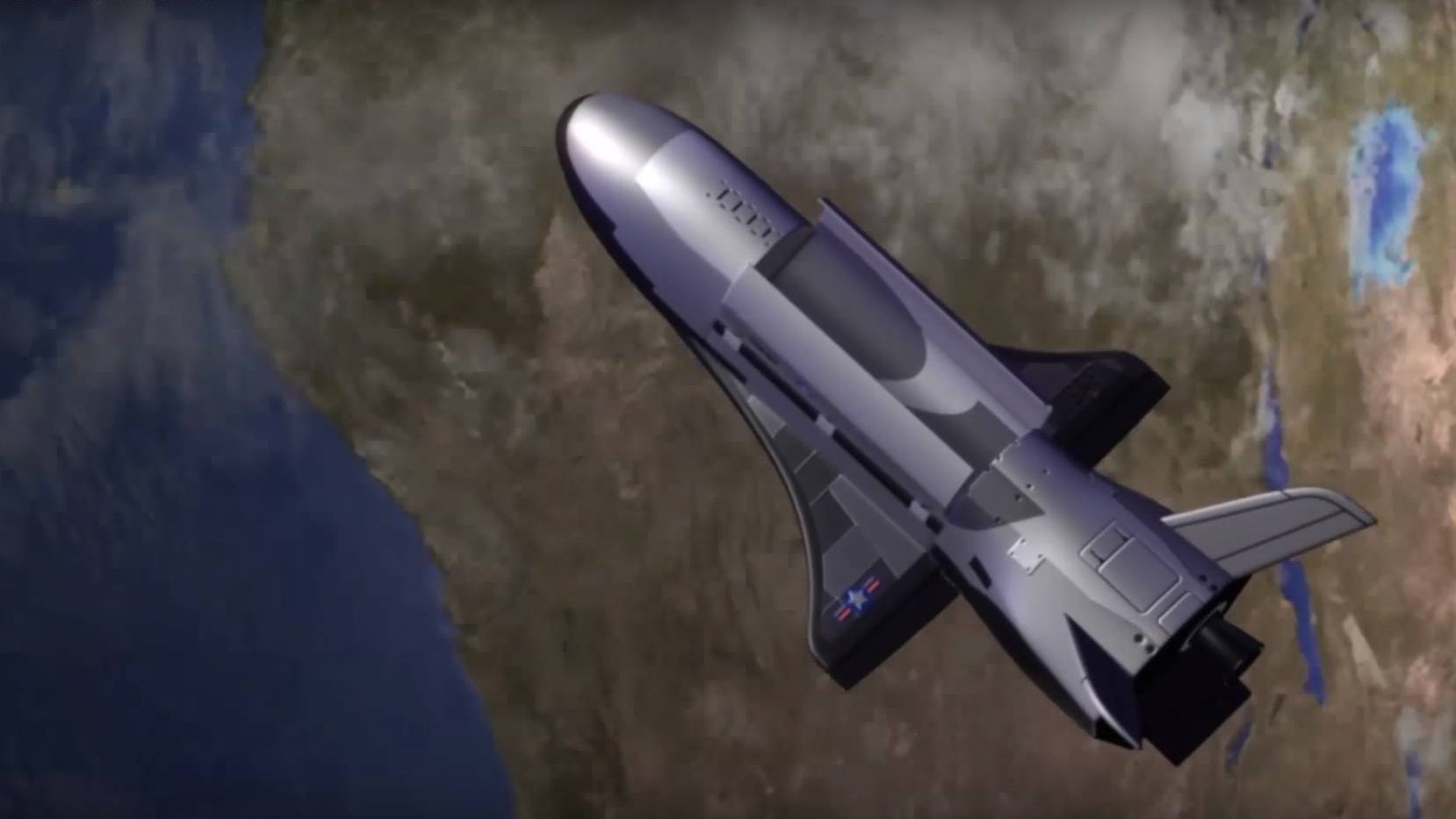
3) The missions have multiple names
As with most government programs, you can get bogged down in X-37B nomenclature if you're not careful. For example, each flight has two official names — the OTV version as well as a "USA" variant, which is applied to most US military missions. (OTV-1 is also known as USA-212, for instance.) In addition, OTV-6 (or USA-299, if you prefer) has its own Space Force designation, USSF-7.
You can follow your heart, but at Space.com, we keep it simple, sticking with the "OTV" mission monikers.
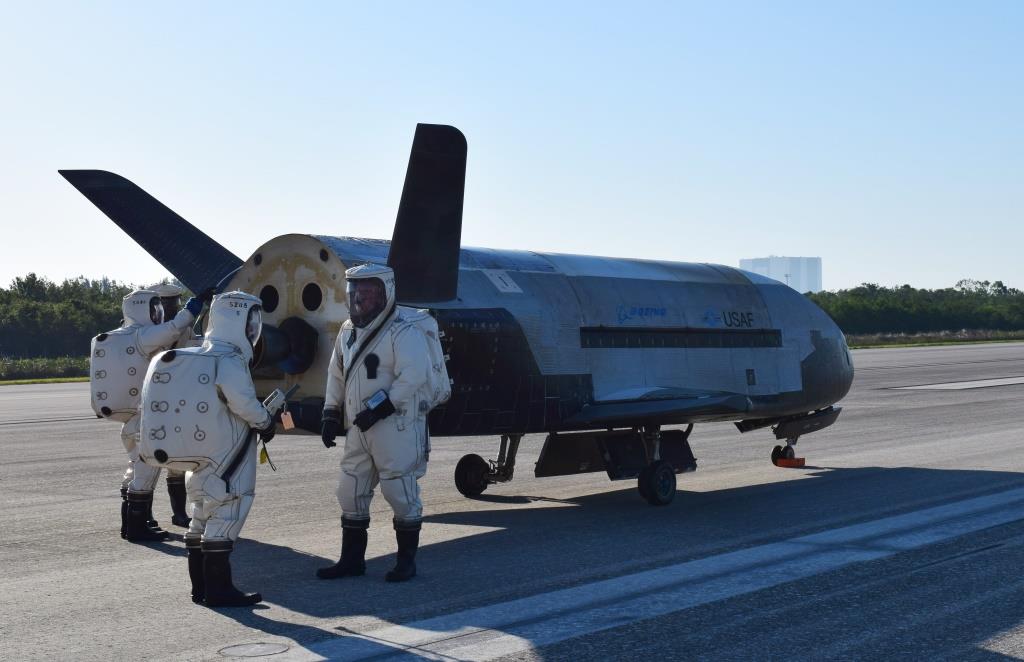
4) It has NASA roots
The X-37 program started in 1999 with NASA, which initially planned to develop two separate vehicles: an Approach and Landing Test Vehicle (ALTV) and an Orbital Vehicle (OV). But NASA transferred X-37 development to the Defense Advanced Research Projects Agency (DARPA) in 2004, at which point it became a classified program.
In 2006, the Air Force announced it would develop its own X-37 vehicle, which it dubbed the X-37B, or OTV. The design of the space plane was based heavily on the original OV, which was never built. (DARPA did construct and test the ALTV, however.) Boeing has been the primary contractor for the X-37B program dating back to its inception in 1999. To date, the company has apparently built two X-37B space planes for the U.S. military. (Two different vehicles have flown the program's six space missions.) These vehicles were first operated by the Air Force but are now flown by the Space Force, which was officially established in December 2019.
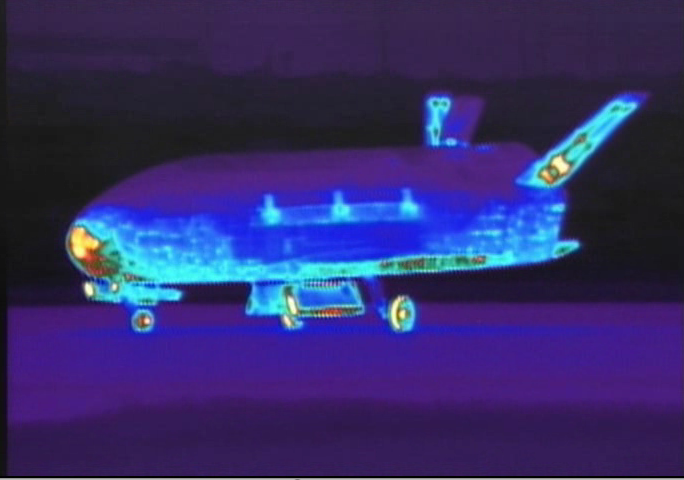
5) The missions are incredibly long
The Air Force's X-37B fact sheet states that the space plane is designed to spend "270 days or greater" in orbit at a time. The vehicle has already zoomed past that nine-month marker multiple times.The first X-37B mission, known as OTV-1, stayed aloft for just 225 days. But OTV-2 and OTV-3 lasted 469 days and 674 days, respectively. OTV-4 circled Earth for a record-shattering 718 days before it landed in May 2017, and OTV-5 then broke that mark, racking up 780 days in orbit. OTV-6 is ongoing, and it's unclear when it will end.
This longevity may be a key part of the X-37B program. After all, engineers testing technologies for future satellites want to see how this gear behaves in the space environment for long periods of time, experts have said.
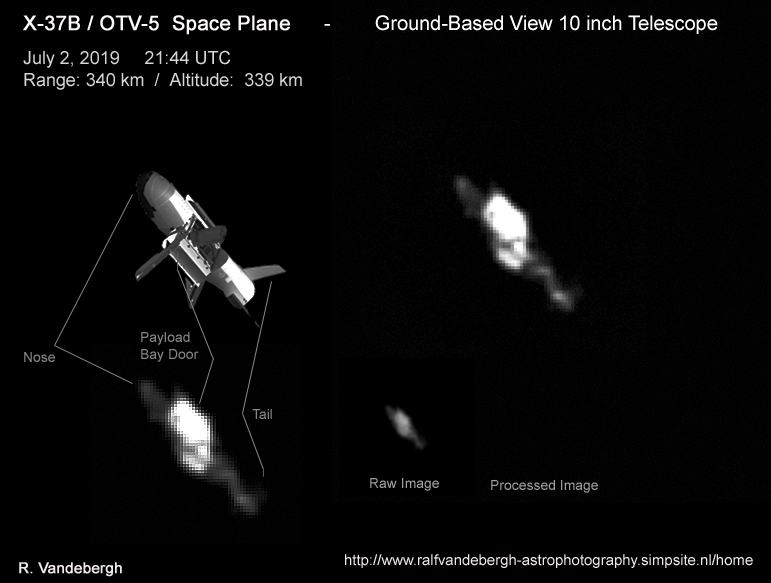
6) You can see it from the ground
Though the military doesn't disclose the X-37B's precise orbit, keen-eyed amateur astronomers have managed to track the vehicle from the ground — and so can you, thanks to their efforts.
Check out Space.com’s satellite tracker to see where the X-37B is overhead during a mission. The view won't be dramatic; the space plane usually looks like a star of middling brightness moving across the sky.

7) It's solar powered
Like most satellites, the X-37B generates electrical power from sunlight. The space plane is equipped with gallium arsenide solar cells, which deploy from the vehicle's payload bay after it reaches orbit.
The X-37B may also help humanity harvest sunlight in space, a longtime sci-fi dream. One of the few OTV-6 payloads that military officials have disclosed is a U.S. Naval Research Laboratory experiment called PRAM-FX, which is designed to convert sunlight to radio-frequency microwave energy. That's a crucial step for any space-based solar power station, which would then beam those microwaves down for use on Earth.
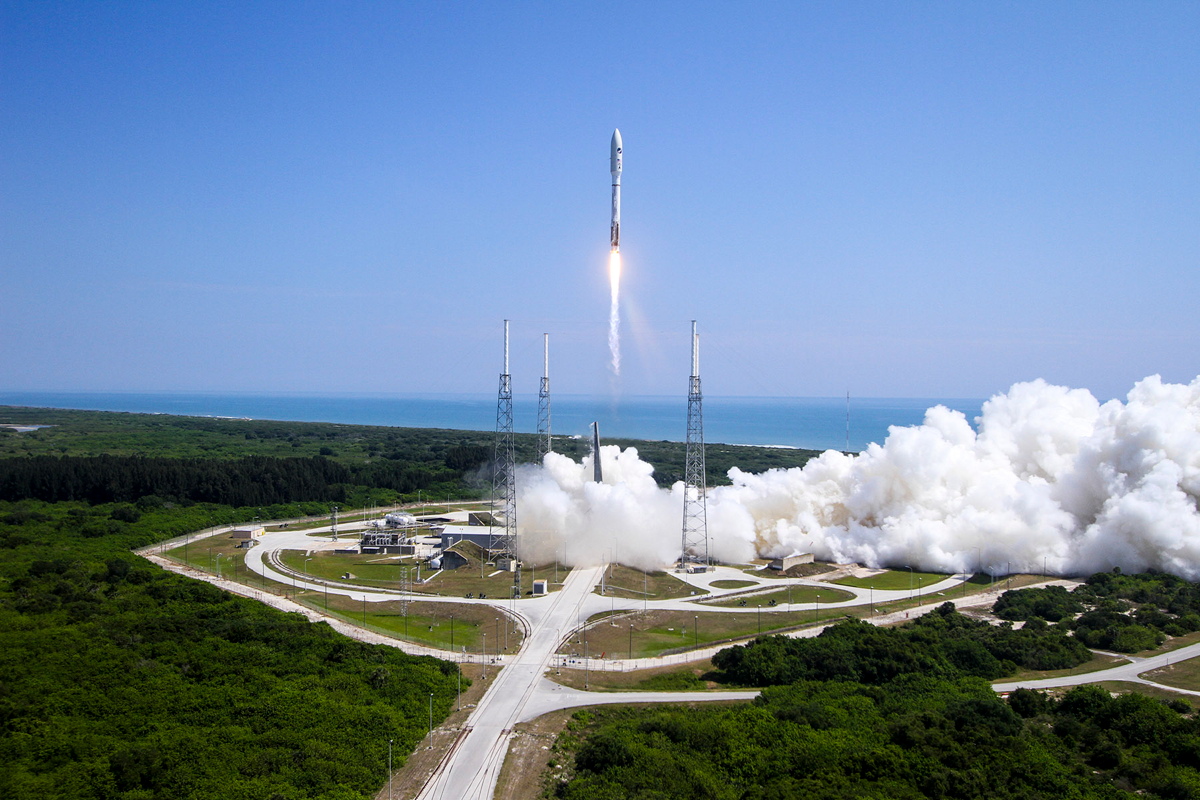
8) It has multiple launch and landing sites
All X-37B missions to date have launched from Florida's Space Coast — either Cape Canaveral Space Force Station or NASA's Kennedy Space Center (KSC), which is right next door. But the space plane has landing sites on both sides of the continent.
OTV-1, OTV-2 and OTV-3 all landed at Vandenberg Air Force Base, on the Central California coast. OTV-4 and OTV-5, however, touched down at KSC's shuttle landing facility, which was heavily used by NASA's space shuttles during their 30 years of operation. Edwards Air Force Base in Southern California, which also hosted some space shuttle landings, is a backup site for the X-37B but has not yet been used during an OTV mission.

9) China has its own version
The X-37B seems to have a Chinese cousin. In September 2020, a spacecraft landed on a runway in western China after a two-day mission about which Chinese officials have said very little. The state-run Xinhua news agency, for example, described last year's flight in vague terms, calling it "an important breakthrough in reusable spacecraft research" that is "expected to offer convenient and low-cost round-trip transport for the peaceful use of space."
That Xinhua report did not even identify the vehicle as a space plane. Outside experts have surmised that detail, based on the runway landing, which was spotted by a satellite operated by San Francisco-based company Planet, and other scattered pieces of information. So the Chinese variant of the X-37B is even more mysterious than the original.
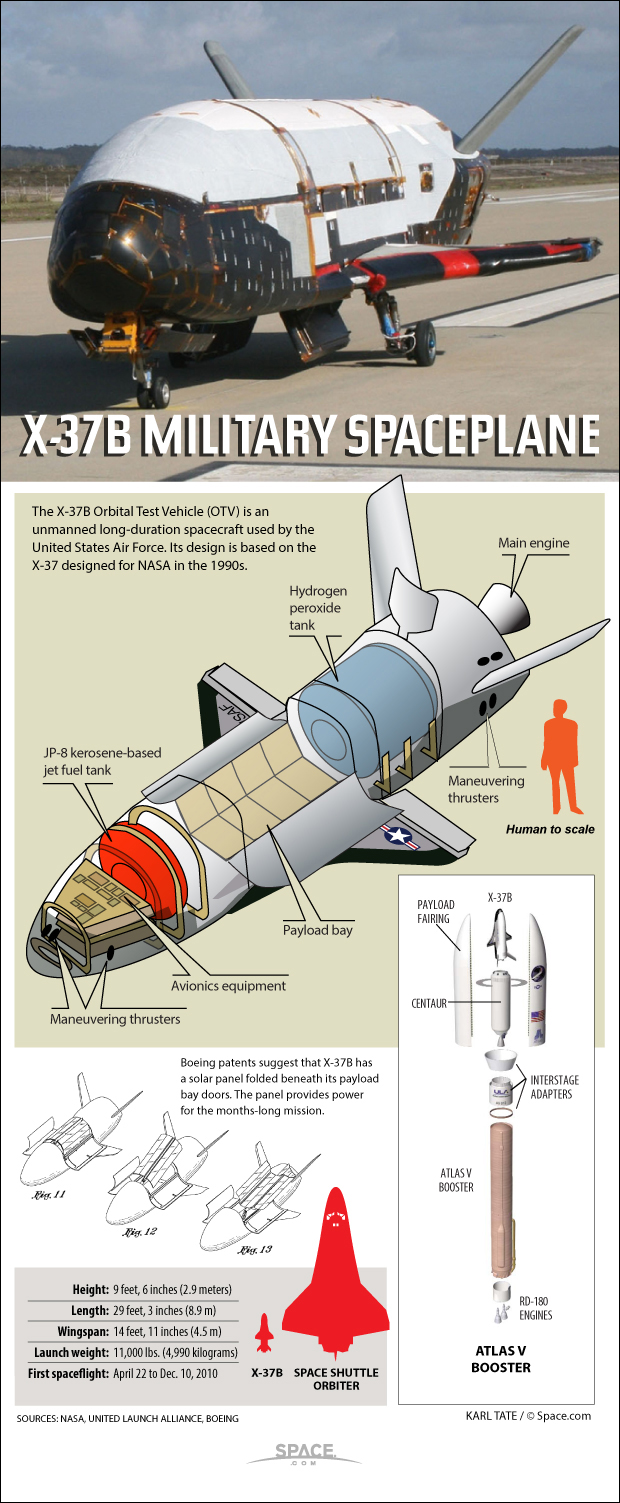
10) A modified variant has been proposed as an 'astronaut ambulance'
The current version of the X-37 may not be the last to reach space. In 2011, Boeing representatives announced that they were considering developing a larger variant called the X-37C, which could carry up to six astronauts to and from the International Space Station (ISS). That concept vehicle is unlikely to be built anytime soon, given that Boeing is already under contract with NASA to fly astronauts to and from the orbiting lab with the company's CST-100 Starliner capsule.
Also, an engineering team led by former NASA astronaut Stephen Robinson has proposed using a modified version of the X-37B as an ISS emergency-evacuation vehicle. Again, this is just a concept at the moment, and there's no indication that Boeing is seriously investigating this "astronaut ambulance" variant.
Mike Wall is the author of "Out There" (Grand Central Publishing, 2018; illustrated by Karl Tate), a book about the search for alien life. Follow him on Twitter @michaeldwall. Follow us on Twitter @Spacedotcom or Facebook.

Michael Wall is a Senior Space Writer with Space.com and joined the team in 2010. He primarily covers exoplanets, spaceflight and military space, but has been known to dabble in the space art beat. His book about the search for alien life, "Out There," was published on Nov. 13, 2018. Before becoming a science writer, Michael worked as a herpetologist and wildlife biologist. He has a Ph.D. in evolutionary biology from the University of Sydney, Australia, a bachelor's degree from the University of Arizona, and a graduate certificate in science writing from the University of California, Santa Cruz. To find out what his latest project is, you can follow Michael on Twitter.
